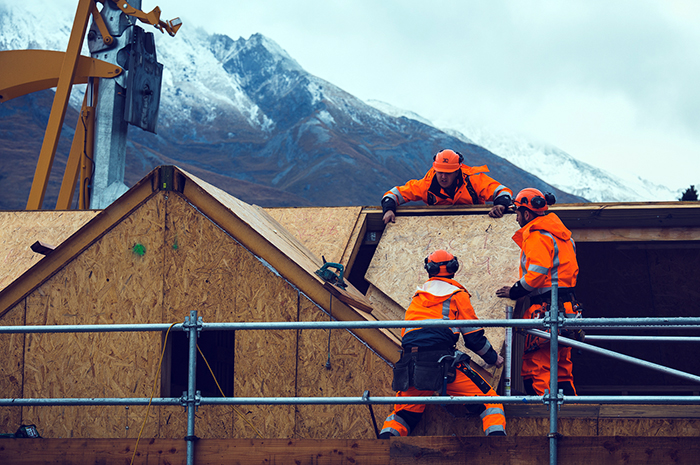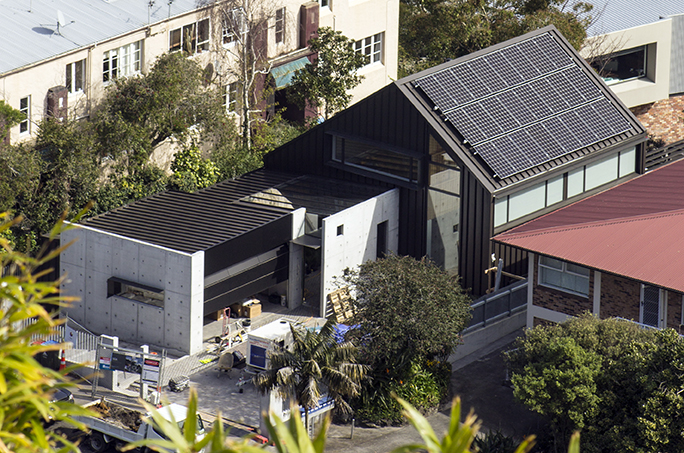This year during Global Entrepreneurship Week, in the spirit of celebrating all that New Zealand has to offer, Pure Advantage have teamed up with Kiwi Connect and the Edmund Hillary Fellowship to promote some of the incredible work that is being done in the green growth and clean-tech space in New Zealand, and showcase the opportunities that exist here.
With small test populations, a spirit of resourcefulness, business friendly regulations and a beautiful natural environment to protect, New Zealand is a perfect place to develop and incubate clean-tech and green growth ventures. We were also recently named the #1 place in the world for the ease of starting a business, so no excuses for not getting into it!
This week, we’ll be bringing you stories of entrepreneurs working on innovations relating to energy, food production, freshwater protection, marine environments and the built environment.
A building is more than a box for people, more than a place of work or shelter from the elements. If you’re Matt Fordham or Shay Brazier, buildings can be “heroes” and “champions”, capable of triggering change in the way we live.
The pair are co-founders of Evident, a fledgling consultancy that grew out of Brazier and partner Jo Wood’s successful 2013 project to build a groundbreaking zero energy home in Auckland’s Pt Chevalier.
Evident’s approach is two-pronged. At the most obvious level, it supplies automation systems that provide a single point of control for a building’s heating, lighting and ventilation, optimising energy efficiency and comfort. But Fordham and Brazier aren’t interested in one-off wins and incremental improvement. They want a sustainability revolution, and to help speed up the transformation of our built environment, they aim to make all the lessons, data and stories from their projects freely available to help influence others.
“We want to try to scale up these buildings, so they inspire or enable 10, 50, 100, 1000 other buildings,” says Fordham, Evident’s Communications Director.
They describe Evident, which includes three other team members, including an architect, electrical engineer and software engineer, as a “mission-led” company, meaning that profit comes second to doing the right kind of work. Recently they initiated the process of becoming a certified ‘B Corp’ (short for ‘Benefit Corporation’, a for-profit company that includes among its legally defined goals achieving a positive impact on society and the environment), a status that’s been described as the sustainable business equivalent of Fair Trade certification for coffee.
“We tend to work with clients who have similar aspirations,” says Fordham. “They look on a project as being an opportunity to build a great building for themselves, but also to have impact outside of that.”

Builders slide SIP roof panels into place on Cabin One at Camp Glenorchy. Photo: Sharee McBeth Photography
It’s early days, but Evident already has some runs on the board. It developed a smart precinct concept for Waterfront Auckland (now known as Panuku Development), and is currently working on three zero energy houses inspired by the Pt Chevalier example. But its most significant project is the Camp Glenorchy project in progress at Lake Wakatipu.
Designed to replace the old Glenorchy campsite and store, and driven by a goal of achieving zero energy certification, the development is expected to showcase the best of sustainable building in action, with solar PV generation, electric vehicle charging, grey water and black water treatment, and various other features.
In keeping with its two-pronged approach, Evident’s role will include both communications and supplying technology.
“It’s the most significant project we’ve worked on, and enables us to pull together all the elements of what we do in one place,” says Brazier, Evident’s Technical Director and a qualified mechanical engineer.
“We’ll be working with the client to build buildings that are responsive, intelligent and adaptive, so they do actively manage their energy. [The systems] will ensure that enough water will be heated for the number of people staying, and it will actively manage lighting and ventilation in the buildings, and so on.”
But Glenorchy also represents a valuable opportunity to “spread the word” about sustainable building. As Fordham says, “This is a big project, and the fact that thousands of New Zealanders can stay there and interact with these systems, and then go home and think ‘How can that work in my house, or my school, or my office?’, is immense.”
With that in mind, Evident is driving a sustainability communications strategy for the project, including a series of educational programmes to be delivered onsite. It will also deploy “interfaces” throughout the camp to demonstrate to visitors exactly how individual buildings are performing.
Educating the public is key to their vision of improving the built environment, which they argue is woeful in sustainability terms. Brazier says his own Zero Energy House project was motivated because “We couldn’t find a building in Auckland that we wanted to buy. The regulatory environment still isn’t delivering good buildings.”
But the issues go beyond regulation. “Fundamentally the whole discussion around housing at the moment is about affordability,” says Fordham. “The sector is designing towards construction cost targets, and everything else comes after that.”
“We need to start talking about the longer term costs of a building, including its operating costs and some of the non-financial aspects. Like, how do you put a value on your kid being healthy?”

339 by SGA. Photo: SGA
The problem is that people often don’t know that there’s a different way of building. “For a long time, it’s been a case of you get what you’re given. What we’re trying to do is empower people to understand and ask for the things that are important to them. The sector has all the technology and design and construction methods, but until people start asking [for sustainability features] it won’t deliver them. So, a big thing for us is about giving people the language to ask for these things.”
Hence, their open source approach to Evident’s project information. Anything learned should be shared.
Fordham says it goes beyond making design and data available to the world. “It’s why we spend a lot of our time doing educational stuff around our work, describing to people why these buildings are built the way they are. We think the stories behind them are important.”
“It’s the fundamental premise that underpins a lot of the concepts we’re working on,” adds Brazier. “If we can make this information as readily available as possible, it provides a [basis] for others to build and improve upon, rather than having to start from scratch.”
There are challenges to the open source approach, obviously. “The traditional one is ‘I don’t understand how I could make a business by giving things away’. So there’s a perception challenge around the business model.”
But perceptions can be changed, and Brazier and Fordham hope that Evident will ultimately work as a kind educational tool – and a source of inspiration. “We’d like to be open about the workings of the business, and show that you can create a company like this,” says Fordham. “You can be focused on the mission and still be sustainable and successful.”



Leave a comment